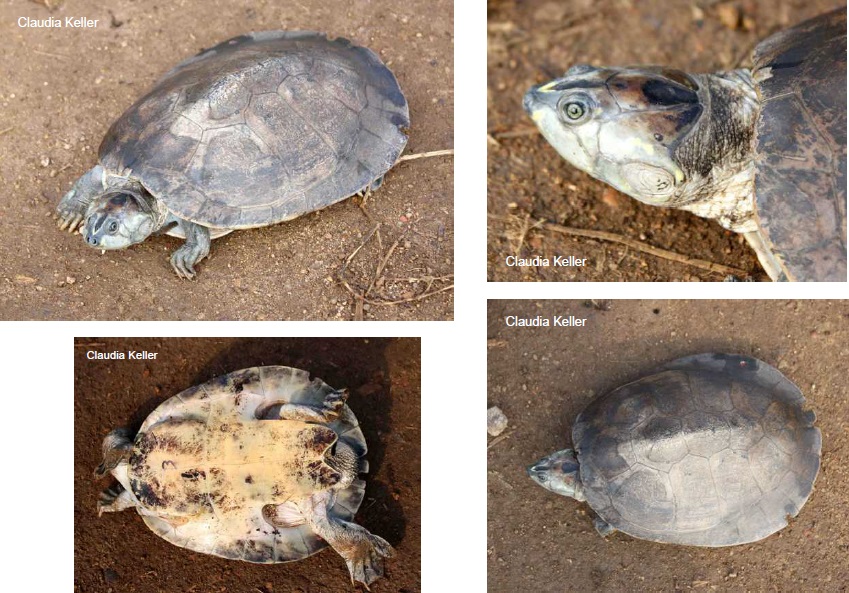 Português
Português English
English
Languages
Podocnemis sextuberculata


Family: PODOCNEMIDIDAE
Scientific Name: Podocnemis sextuberculata
Local Name: iaçá ou pitiú.
Columbia and Peru: cupisco.
Six–tubercled Amazon River Turtle.
Length/Weight: The largest on recorded was 34cms long and weighed 3.5kg.
Appearance: One of the species main characteristics are the 6 tubercules that pre-adults have on the plastron which normally disappear as the animals grow. Females are larger than males which have a longer thicker tail. The grey to olive green domed, eliptical, carapace is smooth with large scutes. There is a distinct groove between the eyes and one or two barbels on the chin.
Habitat: Occur in clear and white water rivers of the Amazon Basin.
Diet: This species is mostly herbivorous. both males and females having the same diet. It has been observed that the consumption of seeds decreases as the size of the the animal increases.
Reproduction: Females lay approximatly 15-16 eggs in a nest on the upper parts of beaches that are revealed during the dry season. The average incubation period is 64 days Sex is determined by the incubation temperature.
Exploitation: Adults are caught in fishing nets, gillnets, and on spawning beaches, and locally consumed in large numbers, particularly during the dry season. This species was the most common species of freshwater turtle traded along the Purus River in Brazil, and adult females account for a very high proportion of specimens in this trade.
Conservation: In 2012, was classified as near threatened by the Scientific Fauna Assessment of Brazilian Endangered Species. It is considered an endangered species with vulnerable populations.
It is listed on CITES Appendix II.

